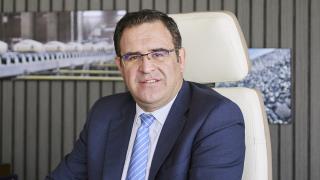Riyad Capital will present its outlook for the Saudi Arabian cement industry in 2018 at Cemtech Middle East & Africa held between 17-20 February 2018 at the JW Marriott Marquis, Dubai, UAE. Santhosh Balakrishnan, assistant vice president of research, explains to ICR what to expect in the year ahead.
ICR: What impact will the ‘Saudi Vision 2030’ initiative have on the cement industry? Will we see the effects of this plan by 2018, or will it come to fruition later?
Santhosh Balakrishnan (SB): In our view, the impact will be positive, but it’s difficult to quantify at this point for a period that is 12 years from now. The government is adopting plans to be less dependent on oil, which suggests that domestic spending could elevate and raise cement demand.
ICR: Some clinker lines have stopped in Saudi Arabia recently due to high inventory and lower demand. Are you expecting to see further temporary stoppages of clinker lines throughout 2018 and what financial impact could this have?
SB: Most of the producers which have taken the brunt of low demand have already resorted to stopping clinker production lines. We expect another 5-10 per cent cut in clinker production, which is the base case in our view. However, companies cannot go beyond the threshold level, at which point cheap fuel access would not be recompensated by Aramco.
The 2016-17 numbers suggest that a 10 per cent cut in production resulted in a 200-300bps drop in operating margins.
ICR: Arabian Cement Co (3.8Mta) and Al Safwa (2.2Mta) were discussing a potential merger and have signed an exclusivity deal. Will this deal happen, and are there sufficient incentives in Saudi Arabia to encourage future mergers?
SB: A consolidation move is welcome at this point in time, but both Arabian Cement and Al Safwa have called off the deal. We expect this to re-emerge as valuations for smaller players have hit bottom and are below greenfield project valuations, meaning it has become very attractive.
Unless the companies in the same market consolidate, we do not expect big synergies. While promoter shareholders are common in a few companies, a strategy to consolidate helps for accounting synergies and not operational synergies.
ICR: Could the surplus cement be exported to resolve the demand and supply mismatch that is highlighted in Riyad Capital’s recent report? How much of an issue is the high export tax?
SB: The government recently reduced the export fee by 50 per cent from SAR85-133/t (USS21-35/t), which is a welcome move. However, the target export markets do not support the prevailing export price level, after adding taxes and transportation costs, which is in the range of SAR320-340/t (USS85-91/t) in neighbouring countries. Additionally, the pace of reconstruction could be delayed in areas where the geopolitical risk is high, which may undermine any growth in export demand.
ICR: Saudi Arabia is looking to shift its focus away from the oil industry. How will this affect the cement industry in 2018?
SB: The economy is now focussed on diversification. The 2018 budget has put an emphasis on capex spending in infrastructure. This is a relief which should reach the cement sector in the coming months.
There are several other reasons for the positive outlook for the industry in 2018, such as the announcement of Neom, a new planned city, which will border the Red Sea coastline, and signs of easing tension in neighbouring markets.
In summary, the end of curtailed spending seen between 2014-17 has had investor sentiments high since the third quarter, but the timing and execution of spending is awaited.
All these factors are positive signals for the upcoming year, not ignoring the impact of VAT, utility hikes, transportation costs and a higher expat levy. There is no immediate demand push expected, but consumption could stabilise at 46-47Mt in 2018.
ICR: How does your outlook for 2018 differ from the outlook of previous years?
SB: Since 2014, when the oil bear market started, cement demand has been rapidly decreasing and the industry suffered from opacity in government spending. As we discussed at Cemtech MEA 2017, there were no green shoots to be seen, which therefore resulted in our neutral outlook for the period. However, our outlook for the year ahead is more upbeat, moving from neutral to positive.
Financially speaking, the overall sector saw a 26 per cent fall in 2017 in market capitalisation, taking 2014-17 returns to -52 per cent. While the fundamental signs for a further rally are not seen at present, the worst of the downturn is ending in our view.
Santhosh Balakrishnan, Riyad Capital (Saudi Arabia) is a speaker at Cemtech MEA 2018, which takes place in Dubai on 17-20 February, 2018. For more information click here
